

If we were asked for a somewhat eye-catching RX Vega64 and if the range of such cards were not so limited, then the Red Devil from Powercolor would come to mind spontaneously. Because it not only applies quite strongly visually, but also ... Board layout
Powercolor also differs somewhat from AMD's reference layout at first glance, but the most important areas were taken over almost 1:1 during the layout. Only for the second BIOS chip and the LED block with DIP switch... We intentionally use the standard BIOS of the card for the benchmarks, because as we will see later, the OC-BIOS buys a completely negligible performance increase due to an almost nonsensical increase in power consumption. Genere... The overall picture does not change much, even if the Vega cards break in a little more in a few games. But then it almost doesn't matter if reference or board partner card. Shared suffering is half suffering, although it is never a real d... Power consumption at different loads
The power consumption in the gaming loop is at the measured approx. 283 watts in standard mode about 3 watts above what could be measured with the reference in the default BIOS. This is all the more astonishing because the... Overclocking and undervolting
The conventional overclocking by means of an even higher power limit and more clock counteracts the current cooling concept, because the rather quiet cooler gets along quite well with what it has to dismount ex works. More on the other hand... Cooling system and backplate
Of course, the generated waste heat is directly related to the recorded power, for which the cooling solution is responsible for optimum dissipation. If you remove the top cover of the cooler, we already see the ... With the Powercolor RX Vega64, the circle of all graphics cards we have tested so far with AMD's Vega chip closes, because there are no more really produced and traded custom designs on the market, you can see from Sapphires Pu...
We intentionally use the standard BIOS of the card for the benchmarks, because as we will see later, the OC-BIOS buys a completely negligible performance increase due to an almost nonsensical increase in power consumption. In general, even with this crowbar, the core message that a potential increase cannot compensate for or eliminate partial disadvantages compared to competitor products does not change. And where there is a head start, it does not increase significantly. It just gets louder, hotter and in the end more expensive – but it doesn't really get nicer.
Benchmark results in 2560 x 1440 pixels (WQHD)
First, we test in the WQHD resolution, because we assume that with this card you will mainly use the medium high resolutions. At least AMD has these players firmly in mind as a target group. The advantage in the real achieved clock compared to the reference map is usually not excessively large and thus the subjectively noticeable performance increase is rather manageable. After all, the Powercolor RX Vega64 Red Devil is consistently faster – once more and once less.
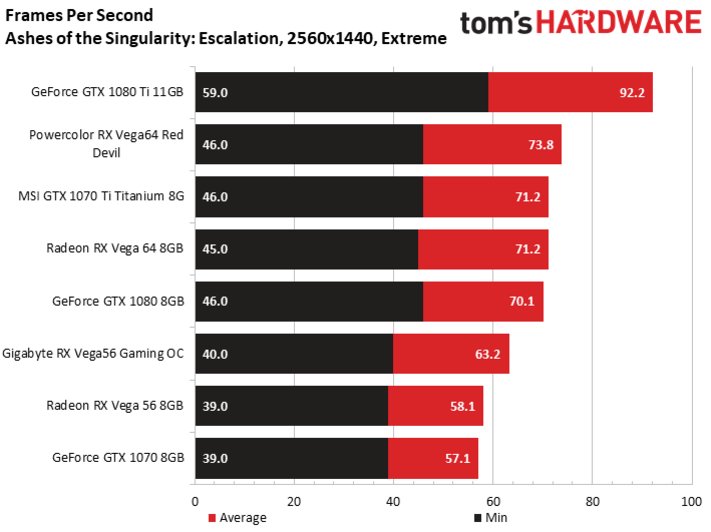
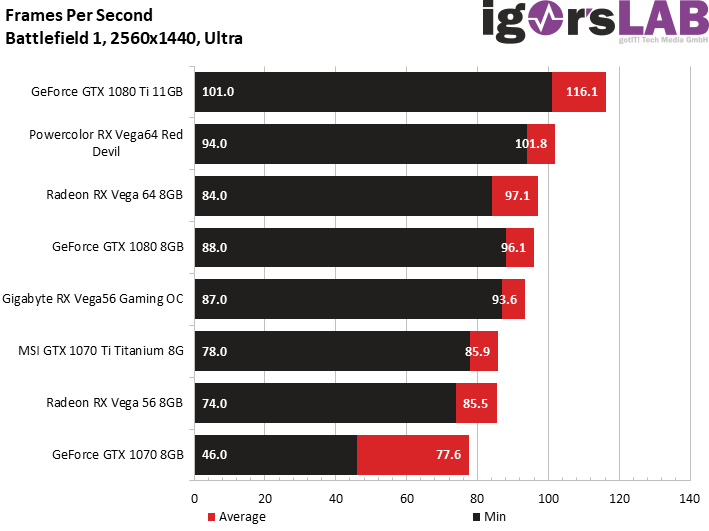
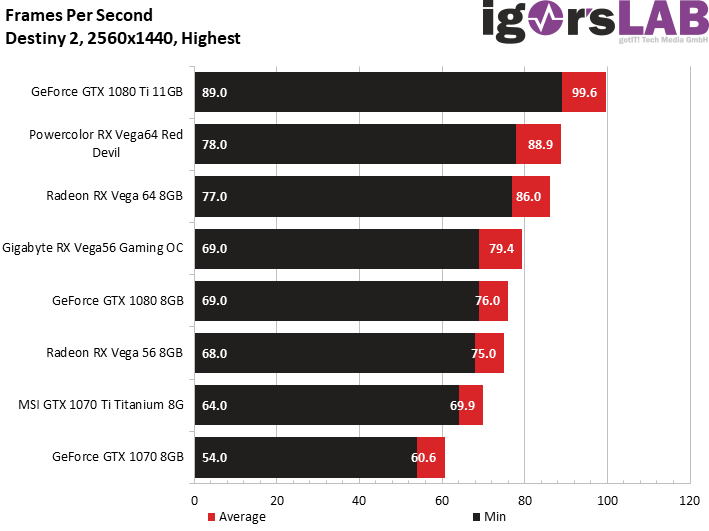
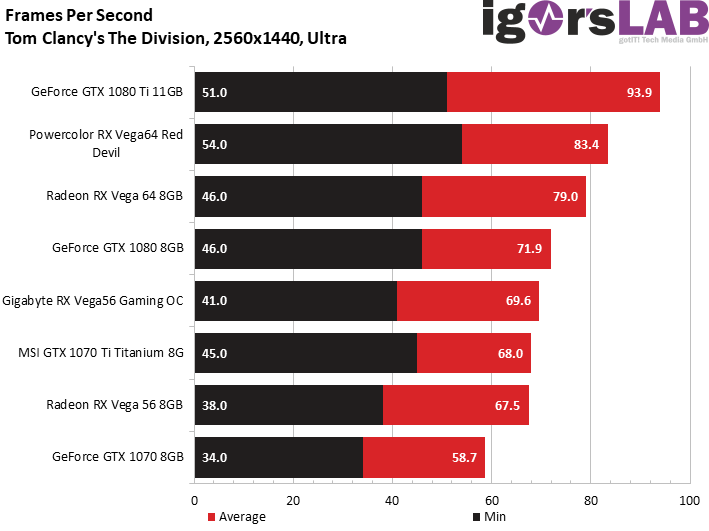
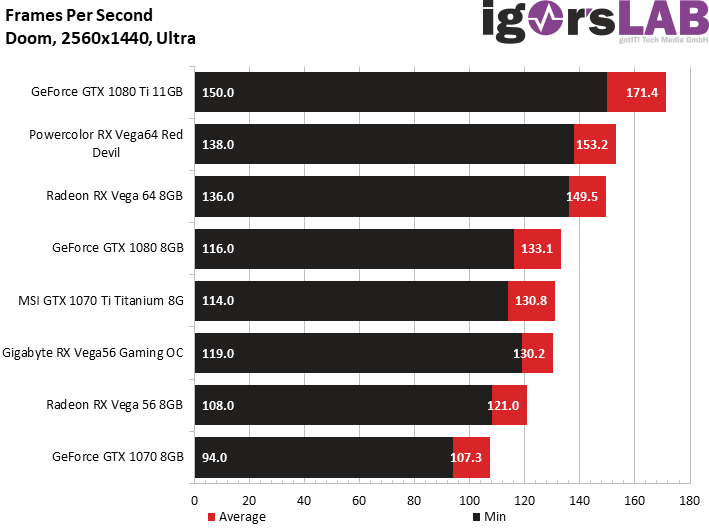
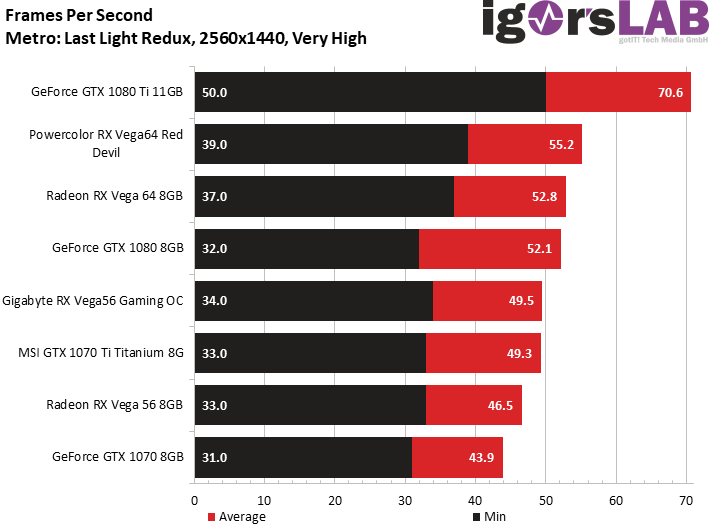
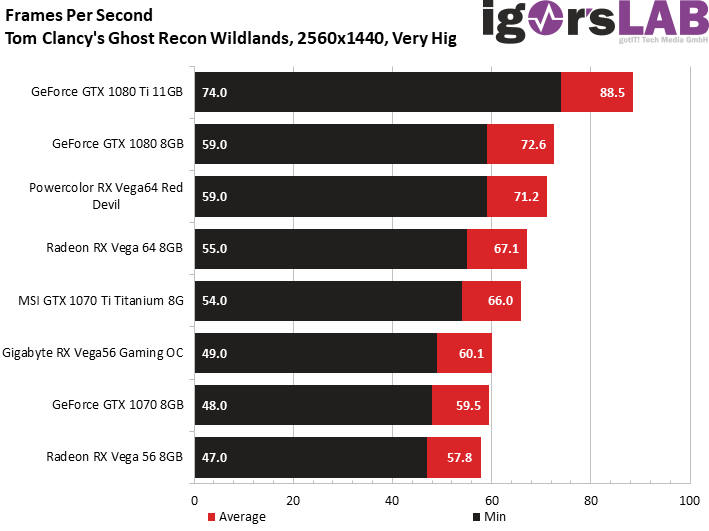
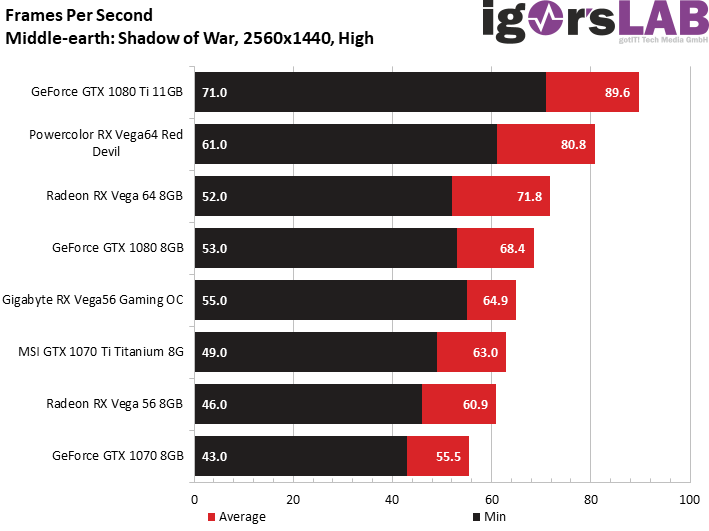
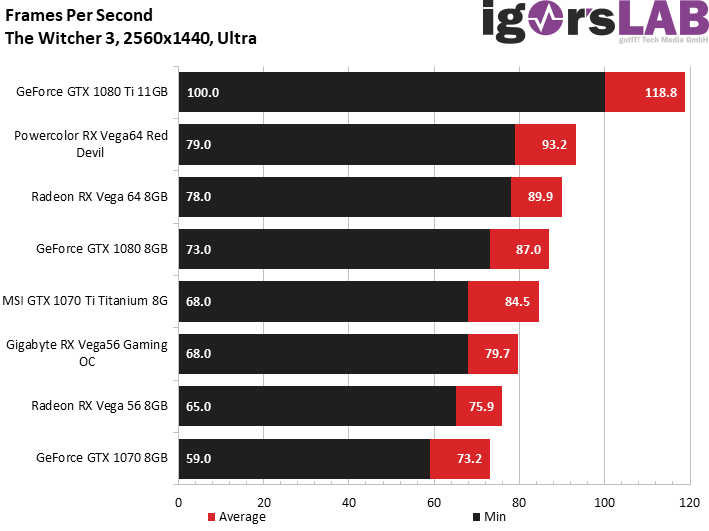









































Kommentieren